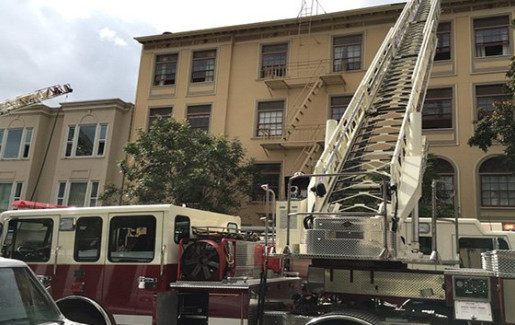Three-Alarm Fire Strikes Mission District Victorians
The buildings were on the historic register and would have to be restored with historical integrity.
17th Street Partners turn to The Greenspan Co./Adjusters International
Description
The four stories of converted apartment dwellings that comprised the buildings sustained considerable structural damage, and extensive water damage throughout. As is common, the insurance company engaged a contract consultant to estimate the damages on the insurance company’s behalf. As a result of this analysis, the insurance company offered a settlement of just under $2 million.
Issues
- The buildings were on the historic register and would have to be restored with historical integrity. Only a small number of contractors were trained and capable of ensuring the materials and construction methods needed to adhere to period architectural aesthetics and vernacular were constructed properly. The Greenspan Co./Adjusters International (TGC/AI) team’s challenge was to ensure the reconstruction costs accounted for the authenticity of the Victorian-era structures.
- The insurance company engaged an abatement company that failed to fully remove asbestos from the insulated plumbing, a public health hazard, and a code violation. In addition, the abatement company failed to properly address a mold issue under each of the building’s subfloors. This mold, which was the result of water inundation of the property to extinguish the fire, also presented a significant health hazard. TGC/AI’s challenge was to ensure that the reconstruction costs incorporated the removal of all hazardous and infested materials from the buildings.
Solutions Applied
- The building’s historical status required reconstruction to historically accurate standards of construction. The buildings had been maintained in pristine condition, supporting TGC/AI’s argument that the insured was entitled to replace all components—four-coat plaster walls, fireplaces, custom wood double-hung windows, hardwood floors, and unique fenestrations—with like kind and quality. The insurance company capitulated to the reconstruction proposal with the understanding that it was a requirement of the historic register. Additionally, the insured was entitled to hire an architect and an engineering firm, the costs of which were covered under the policy, to prepare drawings to restore the building to its original luster and to satisfy current codes.
- TGC/AI engaged the services of an industrial hygienist to inspect and determine the extent of water damage and to address the hazardous material and mold issues. The recommendation was for asbestos remediation, which included removing insulation around the heating, plumbing, and fiber sound barrier between the joists and subfloors. An abatement contractor was hired to determine the additional costs of removing leftover debris and mold-infested materials between the studs and plaster walls. The carrier accepted Greenspan’s hygienist report and as a result, agreed to pay all the costs associated with correcting these conditions.
With the reports submitted by the building consultant and hygienist, TGC/AI demonstrated that the insurance company’s initial analysis and estimates were insufficient. The insurance company’s adjuster agreed to have the repairs rebid and increased their offer to $3.5 million. TGC/AI further negotiated an impressive settlement of $4.5 million based on the expanded scope, corrected unit pricing, materials pricing, and updated labor costs.
Outcome
The Greenspan Co./Adjusters International’s efforts enabled the property owner to collect over $6 million for the entire claim. With these funds, the insured was able to upgrade the buildings using modern construction techniques, while retaining the original feel and grace of these beautiful Victorian structures.

